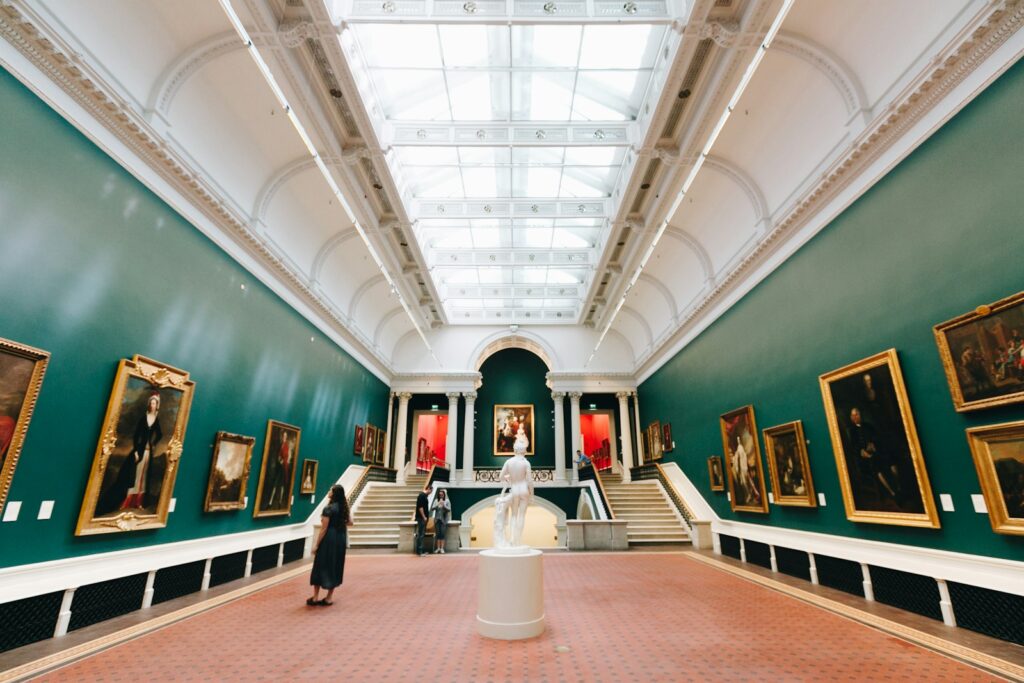Every great landmark hides surprises. From royal palaces to libraries and theme parks, secret rooms in famous buildings blend mystery, security, and whimsy. Concealed passages, panic rooms, and hidden apartments whisper stories of power and play.
Peek behind the walls as we spotlight ten astonishing examples showing how architecture protects people, preserves history, and delights curious visitors worldwide today.
The White House: Presidential Escape Routes
The White House functions as a fortress, not just a home. Beneath its façade, tunnels connect it to nearby government buildings. Engineers added routes during World War II to enable safe evacuation under attack. Presidents and staff use these passages for discreet exits and late-night strategy sessions.
See Lost & Found — The World’s Most Famous Missing Treasures for another peek behind history’s locked doors.
The Vatican: The Passetto di Borgo
Stretching nearly half a mile between the Vatican and Castel Sant’Angelo, this elevated corridor served as a secret escape route for popes in times of danger. Pope Clement VII famously used it in 1527 to flee during the Sack of Rome. Today, parts of the passage are open to guided tours, but much remains off-limits.
Mount Rushmore: The Hidden Hall of Records
Behind Lincoln’s head, a concealed chamber cuts into the mountain. Sculptor Gutzon Borglum envisioned a “Hall of Records” to house key American documents, including the Declaration of Independence. Workers never finished the room, but caretakers placed a time capsule to preserve his plan.
The Eiffel Tower: The Secret Apartment
Gustave Eiffel secretly built a small apartment for himself at the top of his famous tower. Furnished with wood paneling, velvet furniture, and scientific instruments, it was his private retreat for entertaining guests, including Thomas Edison. The apartment remains visible today, its presence still evident through the glass to curious visitors.
The New York Public Library: Hidden Reading Rooms
Beyond the marble halls, staff navigate tucked-away offices, winding stairs, and secret reading rooms for research and restoration. Conservators restrict public access to protect delicate materials. These quiet spaces deepen the library’s mystique.
Curious about long-hidden surprises? See Time Capsules That Have Been Opened (and What Was Inside).
Disney’s Magic Kingdom: The Utilidors
Underneath the “Happiest Place on Earth” lies an entire underground city. The Magic Kingdom’s “Utilidors” (utility corridors) allow employees to move unseen between areas, deliver supplies, and keep the park spotless. It’s Disney magic, supported by meticulous logistics below the surface.
Buckingham Palace: Hidden Tunnels and Panic Rooms
Rumor has it that Buckingham Palace contains secret tunnels connecting it to government buildings and even a hidden panic room beneath the royal quarters. While details remain classified, the existence of some tunnels has been confirmed by staff. It seems that royal security runs deep.
The Winchester Mystery House: Stairs to Nowhere
Built by heiress Sarah Winchester in the 1800s, this sprawling California mansion is filled with architectural oddities: staircases that lead to ceilings, doors that open into walls, and hidden rooms throughout. Legend has it that she built them to confuse the spirits she believed haunted her family.
The U.S. Capitol: Civil War-Era Tunnels
Beneath the Capitol lie old passageways that once served as escape routes and storage areas during the Civil War. Some still connect to nearby government buildings. Although many are now sealed, a few sections are used for maintenance and historical purposes.
For more brain-tingling mysteries, see Strange Phenomena Scientists Still Can’t Explain.
The Paris Opera House: The Phantom’s Real Basement
Gaston Leroux’s Phantom of the Opera wasn’t entirely fiction. The Paris Opera House was built over an underground lake used as part of the building’s water management system. The dimly lit space inspired the Phantom’s lair, and it still exists today. It’s hauntingly beautiful and genuine.
Secrets Beneath the Surface
Hidden rooms and tunnels remind us that even the most famous buildings have mysteries waiting to be uncovered. Whether for safety, secrecy, or sheer imagination, these spaces offer a peek behind the curtain and prove that every wall might have a story to tell.




